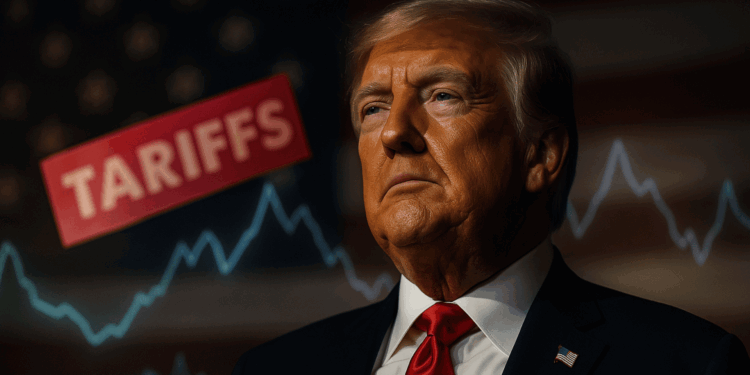- Tariff revenue surged to $29B in a month, on pace to outstrip 2024’s total.
- Americans ultimately bear much of the cost through higher prices.
- Even at projected highs, tariffs would cover only a fraction of the national debt.
President Trump’s recent tariff push has begun delivering substantial sums to the U.S. Treasury. In the latest report, customs and excise taxes—which largely reflect tariff collections—totaled $29 billion in a single month, a pace that could match or surpass all of 2024’s $98 billion within just a few months.
Where the Money’s Coming From
While Trump promotes tariffs as a way to “make our country strong and rich,” the funds come directly from U.S. businesses paying the duties at the border. These costs often pass down to consumers through higher prices. Goldman Sachs estimates that Americans have absorbed 22% of tariff costs so far this year, a share that could jump to 67% if current patterns hold.
Tariffs’ Role in the Budget
So far in fiscal 2025, tariffs have accounted for 2.7% of federal revenue, up from historical norms of under 2%. Some analysts think that with more tariffs, this share could climb to 5%, but that still falls far short of replacing income taxes or significantly reducing the $37 trillion national debt. Trump has floated using tariff revenue for debt reduction or even “dividends” to citizens, but new spending—like the recently passed $3.4 trillion GOP megabill—will likely offset much of the gain.
More Tariffs Coming, but With Limits
Trump’s administration is considering tariffs on semiconductors, pharmaceuticals, and commercial aircraft. However, experts caution that economic drag from tariffs could reduce other revenue sources like income and corporate taxes. Additionally, if tariffs successfully drive more domestic manufacturing, imports—and thus tariff collections—would drop.
A legal challenge also hangs over the policy: a federal court has questioned Trump’s authority to impose certain country-by-country tariffs, and if struck down, some duties could be rolled back with possible refunds, undermining revenue projections.














